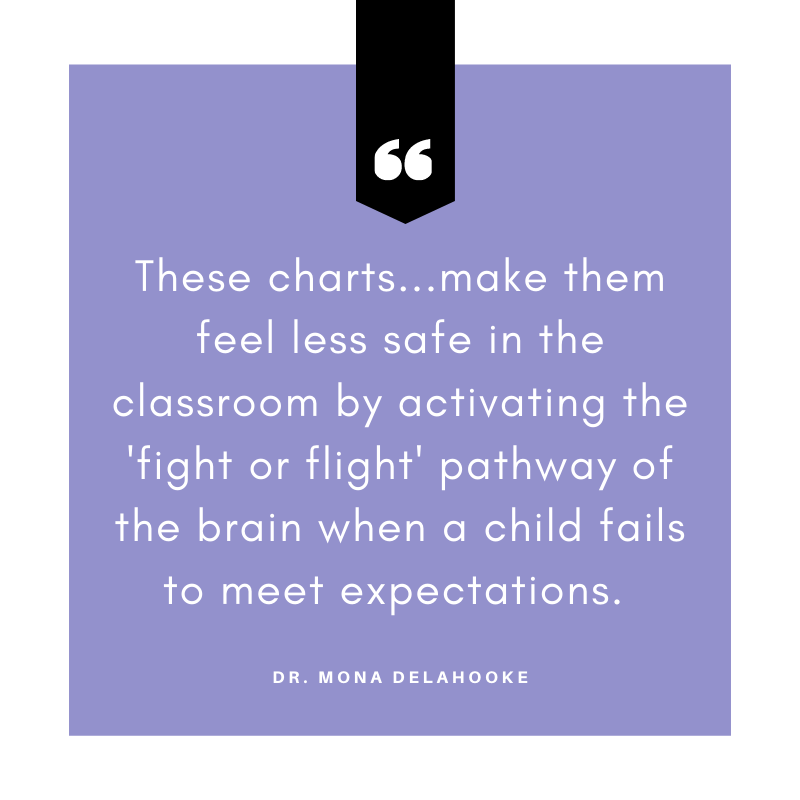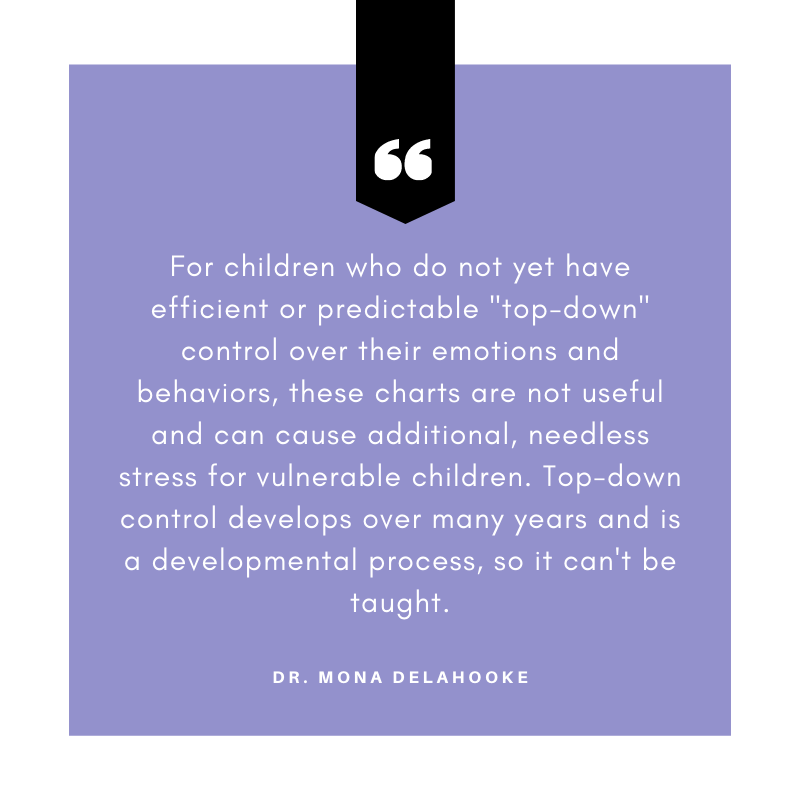What Do Experts Say About Clip Charts
In the last post, we talked about WHY teachers use clip charts. Today I want to talk about what experts say about using clip charts and other types of public classroom management in the classroom. I’m mostly referencing clip charts, because they are so popular. However, using Class Dojo in the same way has the safe effect.
It is not hard to find research to show how damaging clip charts. Unfortunately, they are still all over Pinterest, teacher blogs, and more importantly, in classrooms. If you search Teachers Pay Teachers, there are 28,000 clip charts available. That is a LOT of classrooms using this tool.
I said this in a previous post, but I want to make sure you know I HAD clip charts in my classroom. I truly had no idea how damaging they could be, and I don’t want to shame anyone. BUT…when you know better, do better. I’m hoping this series of posts helps educate and show you that there is a better way. ?
I found this quote from Katie Hurley to be very powerful. You can read her entire article HERE.

Clip Charts negatively impact students brains and their bodies.
I was a very “easy” kid. I always followed the rules and tried to be perfect. But I distinctly remember the day my third grade teacher was absent. We had a substitute teacher and my friends were jumping on the couch. I jumped on the couch and “changed my color” to red. I STILL remember that feeling and I’m 34 years old. When we feel embarrassed, or shamed, our bodies react. When we tell our students “move your clip” in front of their peers, they might feel nauseous or stop being able to focus.

You can read more from Dr. Delahooke in her book, Beyond Behaviors, and this article from moms.com. The fight or flight pathway leads directly to anxiety. For me, my heart races and my mind goes blank. I want my students to feel calm and safe in my classroom.
Jon LeFevre, an administrator had his teachers use a clip chart during a training. You can read more about this here on his twitter. If your school is still encouraging these, this is a great idea to ask your admin about.

Clip charts don’t work long term.
Just like we teach math and reading, we need to TEACH behavior. Clip charts don’t teach students how to handle their big emotions. So often, the negative behaviors our students exhibit are because they don’t lack the control or knowledge of HOW to handle something. We want any behavior system we use to help students self-regulate.
I’ve often seen clip charts used when students
-get out of their seats
-don’t complete their work
-are unkind to each other
-run in the hallway
Most of these behaviors are because students don’t know how to control their frustration or excitement. These things take time to learn and we can provide students will tools to help them.

Clip charts damage the teacher-student relationship.
We know that the student-teacher relationship is a huge factor in student success. Research shows that the more our students feel safe with us, the more they will learn. When we publicly shame our students by saying “move your clip,” or “you’re on red,” they lose trust in us. We become the person who embarrassed them, and not the person they can trust.
Clip charts damage student relationships.
No one wants to be embarrassed in front of their peers. Even the youngest students are very good at self-preservation. When we use a clip chart, the same students are often “down” or “on red.” Other students can see this…they look at it all day. In order to keep from being embarrassed, many students will distance themselves from those students. Feeling left out often leads to more undesirable behavior, and leads to students labeling each other (and themselves) as “good” or “bad.”
There are so many other ways to build a strong, safe classroom community. In my next post, I’ll share some of my favorite tools to use instead of clip charts. You can read that here.
Resources
The Dark Side of Classroom Behavior Management Charts by the Washington Post
Classroom Clip Charts Do More Harm Than Good by Moms.Com
DITCH THE CLIP! Why Clip Charts Are Not a PBIS Practice and What to Do Instead
